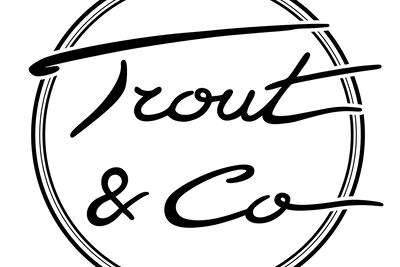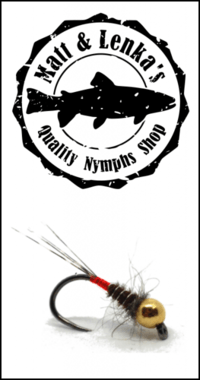The year 2022 has been marked by a milestone in Joe Goodspeed’s career. After having brilliantly conceived the Euro Nymphing rods Contact and Contact II for Thomas & Thomas, Joe now uses his talent for another American firm: DiamondBack. The company produces fly fishing gear at a more accessible price. Joe’s skills, are still there as shown with the review of this Ideal Nymph 10’10 #2.
Diamondback Ideal Nymph 10'10 #2
MEASURES
The Common Cents System protocol was used to characterize the action and the power of this rod :
Power
Regarding the power, 30 cents have been needed to bend this rod on a third of its length. After conversion, it means the ERN is 3.42 and the real power of the rod is #3. It is then superior to what indicates the manufacturer.
Action
With an AA at 68°, the action of this DiamondBack Ideal Nymph 10’10 #2 is fast (superior to 66°), but close to the moderate fast category.
Manufacturing and comfort
The manufacturing of the rod decided by Joe Goodspeed is ideal for nymphing. It is quite close to the Thomas & Thomas Contact II that he built back in the days. The stripper guide is 15in above the handle, which makes the conduct of the line much easier. It is also important to mention that both the reel seat and the handle are totally compatible with a semi automatic fly reel: the screwing downside increase the balance of the combo reel/rod. Furthermore, the relatively short length of the handle (6.42") allows to maintain the ring finger of the hand carrying the rod on the trigger.
About the features on the manufacturing, we noted 2 elevated starting guides and 3 snake guides on the tip, which limits line windings when nymphing “Spanish style” using monofilament.
On the side of the details, the rod counts a hook keeper and alignment dots for the pieces.
While fishing, the Ideal Nymph 10’10 #2 has shown excellent comfort. The balance between rod and reel is found with an empty reel of 5.3/5.6oz (if spooled with ultra-fine fly line). It is likely the same BTW than the Thomas & Thomas Contact II 10’9 #3 (9oz) while the DiamondBack is slightly longer and more powerful, but also much cheaper. A very nice performance indeed.

The opinion of Joe Goodspeed, Thomas & Thomas rod designer :
"There are two major differences in construction of the Ideal Nymph models compared to my previous rod design work. One difference is that was able to create mandrels with the precise taper expansion rates necessary to achieve the actions and recovery that I desire for certain rod models, which is critical for precise actions in the lighter nymph rod models. The other major difference is that Ideal nymph rods are designed with access to a wider range of premium materials, optimizing strength and durability by using the most suitable materials and fiber weights for each section of a four piece nymph rod construction.
A significant feature to note on these rods is the pair of single foot stripping guides. Most nymph rods have a stripping guide going right into a metal guide with higher friction, which is the major drag point while casting shooting a nymphing leader for extra distance. By using the second low friction ceramic insert guide, the leader is stabilized and has much less bounce off the walls of the first single foot higher friction metal guide positioned third in sequence when shooting a cast. The second single foot stripping guide also relieves friction when the nymph rod is fully flexed fighting a large fish, and the apex of the bend where the guide absorbs the most friction is where that guide is located.
All the Ideal Nymph rods are designed to be fast recovering, with significant backbone and fighting power relative to the “weight class” of the rod, which I don’t feel is a parameter we should continue to measure and use as a framework to design and classify nymphing products that are not designed around the concept of being a fly line casting tool. That is an important scale to have and use for all those rods that we cast with a fly line, but it inhibits our ability to design the best nymphing rod actions as we try to work within that box. For the Ideal Nymph rods, I broke free from that box and created fishing tools with less consideration of fitting an AFTMA load rating and more consideration of nymphing performance attributes and durability in construction."
The editor’s review
As he showed with his previous creations, Joe Goodspeed knows what he is doing. He made a very consistent product intended for the modern nymphing approach. The length 10’10 of the reviewed model makes it more for the medium to large rivers. For your information, it only measures 0.8 to 1.2in less than the actual 11’. Its real power #3 grants a considerable versatility and allows it to cast a wide range of nymphs weights from 2.4 mm up to the heaviest. It also allows to fight trout and graylings from all sizes. The moderately fast action inducts a nice bend during the fights. To compare with the Thomas & Thomas Contact II 10’9 #3, the DiamondBack Ideal Nymph 10’10 #2 is a little bit faster.
Nothing to add about the manufacturing, the guides are correctly positioned and the reel/reel-seat combo is perfectly compatible with a semi-automatic reel, now standard in the modern nymphing techniques.
To conclude, Joe reached a very high level of technicity and an attractive price thanks to an Asian manufacturing of a high-quality.



